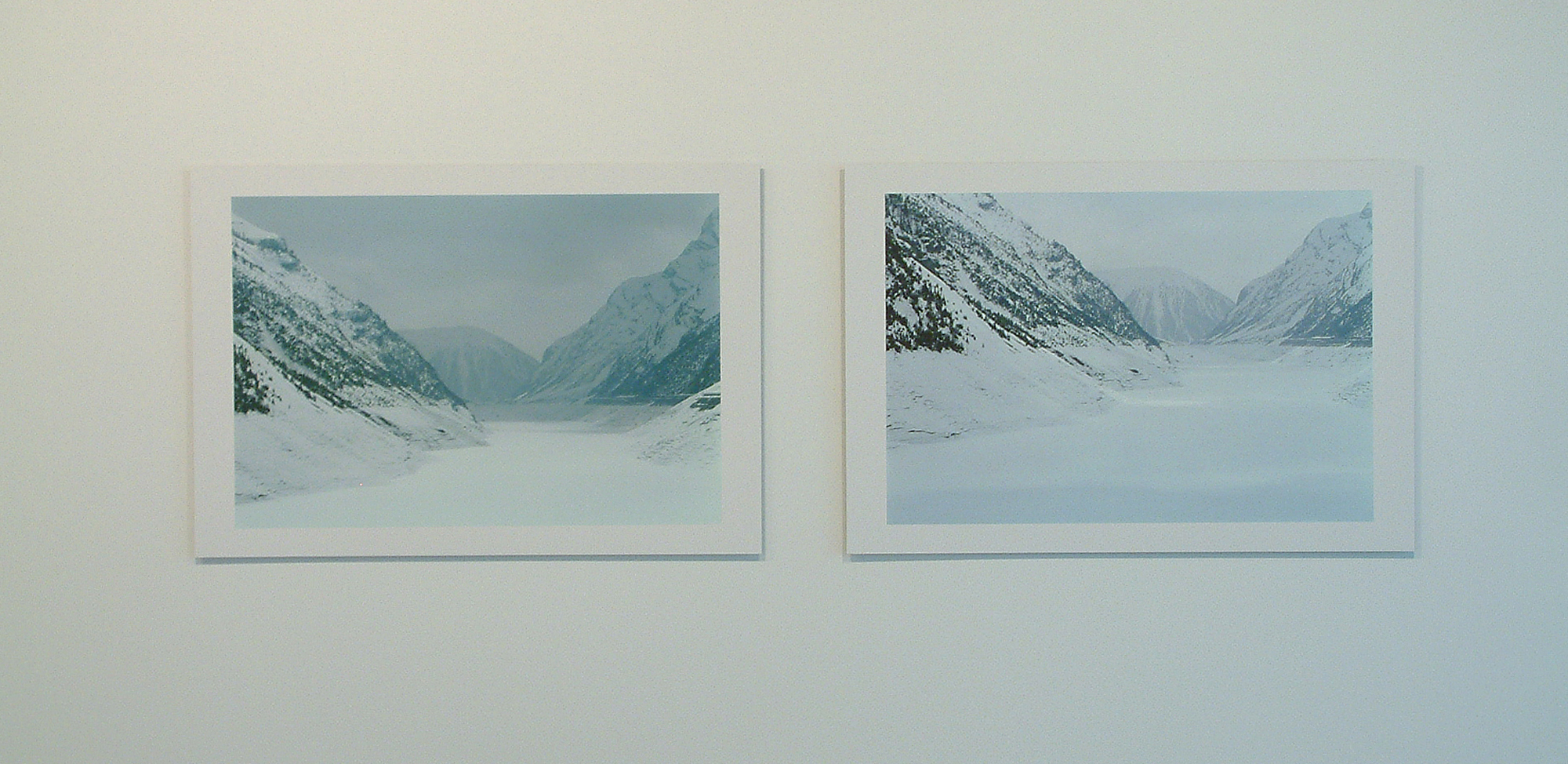landscape / inscape
Stephen Bambury, Elliot Collins, Bernhard Härtter, Sylvia Henrich, Gerhard Mantz, Colin McCahon, Peter Rösel, Bill Viola
27 April 2006 - 28 May 2006

Just as stepping outside the context of nature was the precondition of the technological exploitation of nature as a resource, and the reification of nature was the precondition of its aesthetic appreciation as a landscape, so every turn towards nature has nature's loss as its precondition.
The group exhibition landscape / inscape (Stephen Bambury, Bernhard Härtter, Sylvia Henrich, Gerhard Mantz, Colin McCahon, Peter Rösel, Bill Viola) focuses on the issue of perception and recognition by using landscape as an example. The question behind the exhibition is whether it is possible to see nature or whether every perception of "nature" changes it into an aesthetical phenomenon, which means that "nature" gets lost through the process of perceiving.
In 1979 American video pioneer Bill Viola filmed mirages in the desert of Chott el Djerid in northern Tunisia by using extreme video lenses. Viola described this experience as "to be in someone else's dream" and understood the mirages as "hallucinations of landscape". Convinced of the fact that the experience of the landscape stands in a kind of reciprocal relationship to what he called inscape, Viola aimed to achieve an immediate contact with nature. Like others of his early works, Chott el Djerid claims a pantheistic harmony between nature and man.
Between 2000 and 2005 German artist Peter Rösel traveled several times to the desert on the shore of Namibia and tried to paint mirages. The whole project was entitled as The Fata Morgana painting project. It can be understood as a discourse about the nature of painting. By depicting optical delusions, he forced the denouncement of painting for its duplicitous character, which goes back to Plato. Besides that, the whole project turned into an examination of the question whether perception leads to any kind of recognition or moreover means a kind of construction of the mind.
This question is also examined by German photographer Sylvia Henrich who achieves astonishing results in the visual effects of her large-scale photographs by slight alterations of the technical apparatus between two shots of the same motiv. The results clearly emphasize the fact that seeing is always constructing.
To substitute perceiving by constructing means also that no outer equivalent to the inscape needs to exist. The Muriwai and Necessary Correction paintings by New Zealand artist Colin McCahon show the shifting from mimetic depiction to abstraction. This shifting is accompanied by an increasing spiritual charging of the paintings, which become more and more purely abstract depictions of his inner world.
The final step to abstraction is represented in the exhibition by the works of Auckland based painter Stephen Bambury who formally refers to the paintings by his predecessor.